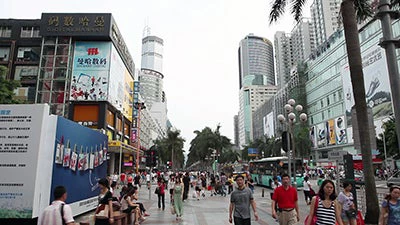
a metropolis of 10 million people in just 35 years.
Today, Shenzhen continues to play its leading role in low-carbon development for its strong commitment and innovative policies, moving from “high-speed” to “high-quality” growth model. Shenzhen launched the first carbon cap and trade scheme in June 2013, and is also one of the highest profile low-carbon city pilots in China.
Therefore, I am excited that a memorandum of understanding on cooperation on climate change between the Shenzhen municipality and the World Bank Group was signed on June 10, 2014 at the International Low-Carbon Forum in Shenzhen. Because Shenzhen is such a symbol of successful pioneer of China’s reform, having been an engine for unparalleled growth for more than three decades, the work detailed under this MOU has a strong demonstration effect, with a wide replication potential within and outside China.
China has set ambitious targets to address growing concerns over carbon emissions: a reduction in carbon intensity of 40-45% by 2020 from the 2005 level, which will largely be met by energy conservation efforts with a target of a reduction in energy intensity by 16% between 2011-2015, and renewable energy scale-up with a target of an increase in the share of non-fossil fuel energy to 15% of the primary energy mix by 2020.
Cities account for 85% of China’s commercial energy use, therefore, they are at the center of the action to achieve the government’s carbon-intensity-reduction target.

This is uncharted territory, and the city government recognizes that it will need to draw on international experience to meet such goals.
Since December last year, I have been leading our team to discuss with the Shenzhen government on collaboration to support the city’s low-carbon city development through analytical studies and technical assistance. In the meantime, our colleagues at the International Finance Corporation (IFC) have also been in discussion with the city on cooperation on green buildings and financial products for the pilot carbon cap-and-trade scheme.
This MOU is a concrete step under the Climate Change MOU between the Government of China and the World Bank Group signed by China NDRC Chairman Xu Shaoshi and World Bank Group President Jim Kim in September 2013. It is also a good example for the World Bank Group acting as one Bank, from both the World Bank and IFC, to support both public and private sectors in low-carbon development in Shenzhen.
The World Bank plans to support the municipal government develop a comprehensive roadmap and specific policy recommendations to achieve its ambitious emission reduction targets, funded by the Energy Sector Management Assistance Program (ESMAP).
This study will first develop CO2 marginal abatement cost curves and scenarios, to integrate and rank abatement measures in the major energy-consuming sectors. Now that the manufacturing industry is moving out of Shenzhen as part of the city government’s aggressive campaign to clean up their environment, the city has identified two other sectors as target areas to reduce emissions: transport and buildings. Finally, this study will also develop a low-carbon investment program in Shenzhen International Low-Carbon City, a district where the municipal government plans to demonstrate a high-growth, low-carbon model.
The other element of the MOU is support for the development of a carbon market for the pilot carbon cap and trade scheme. This includes improvement of the current cap-and-trade scheme, the possible inclusion of transport into the carbon market, and the development of new financial products for this market.
On June 10, Shenzhen Vice Mayor Tang Jie and World Bank Country Director Klaus Rohland signed the MOU in Shenzhen. Mayor Xu Qin, Global Environment Fund (GEF) CEO Naoko Ishii, World Bank lead environmental specialist Garo Batmanian and I witnessed the signing.
“Putting a price on carbon is fundamental to provide signals for investment in low-carbon and resilient growth,” said Klaus Rohland. “We hope this MOU will strongly support Shenzhen to become a leading low-carbon city in China and the world.”
An exciting journey has just begun!


Join the Conversation